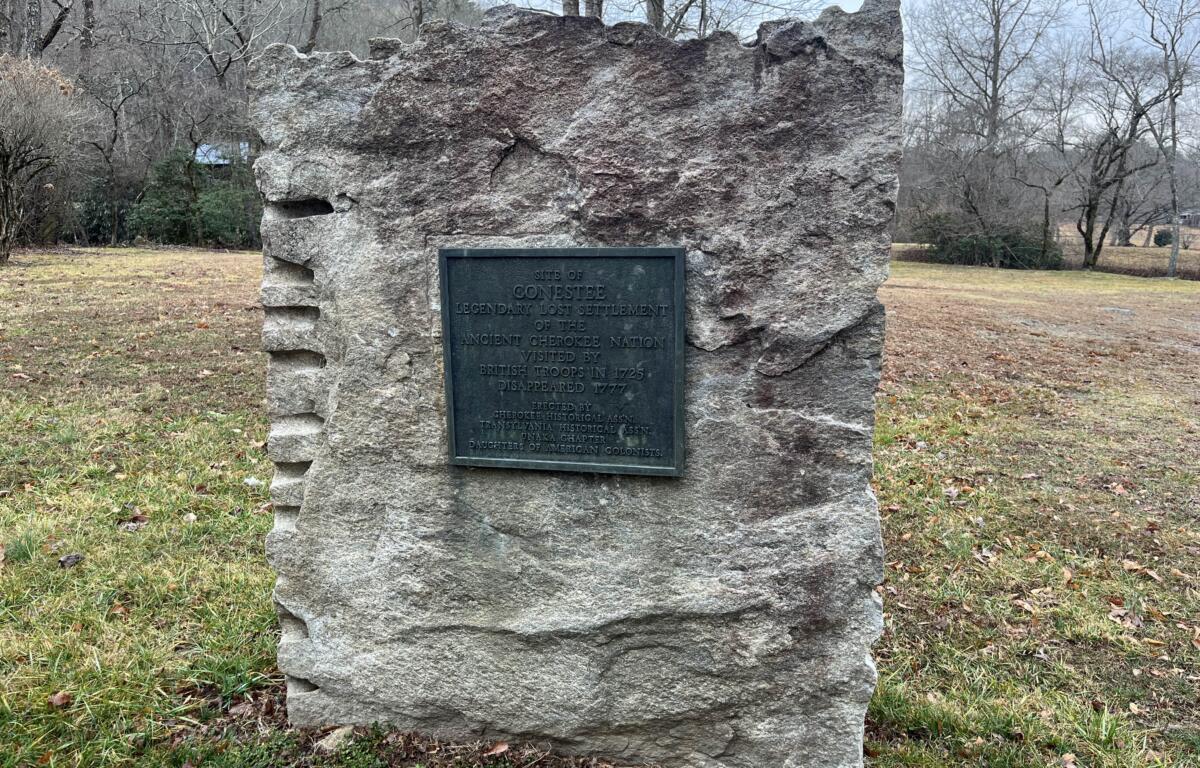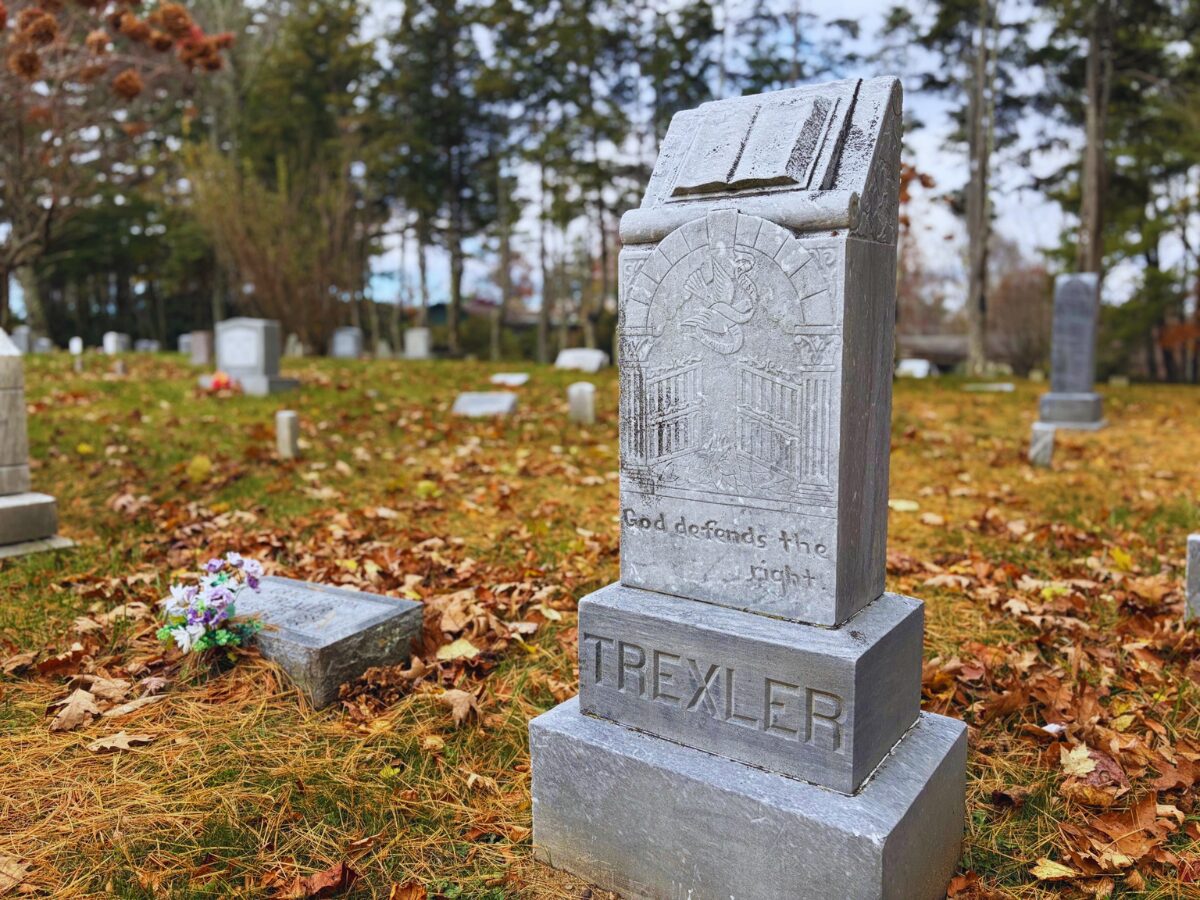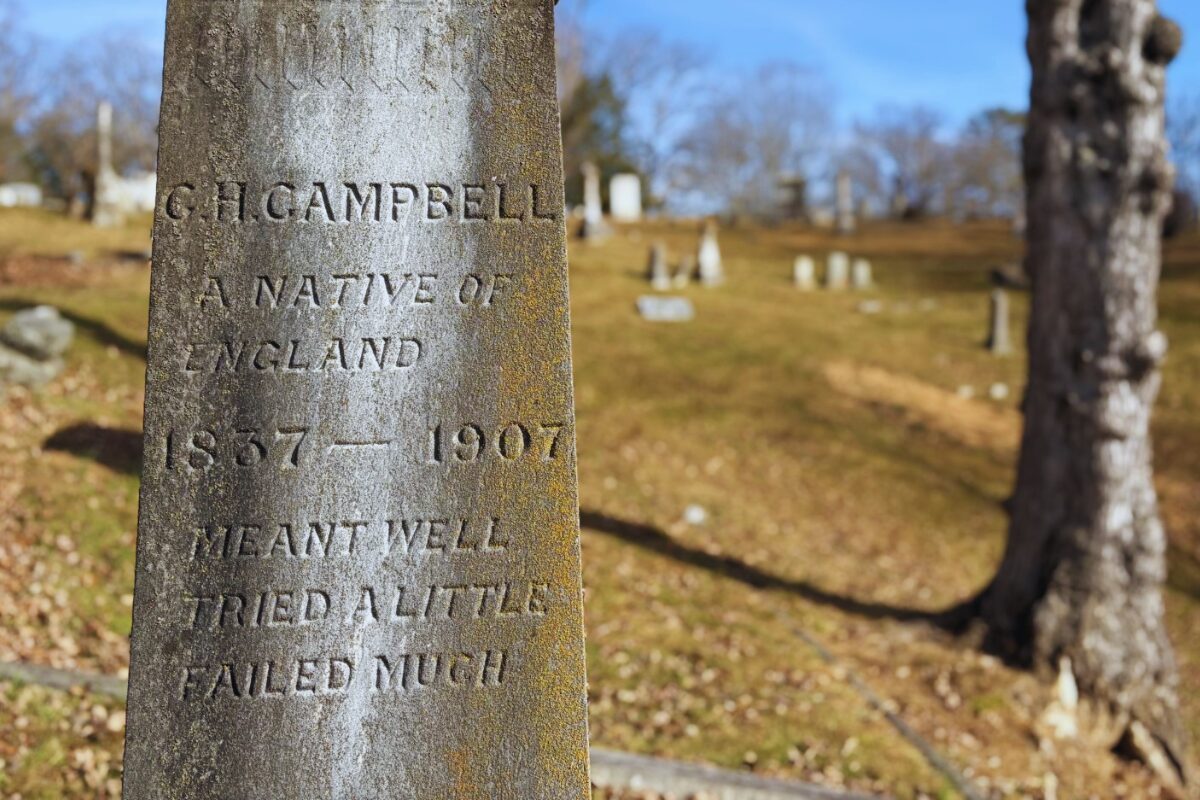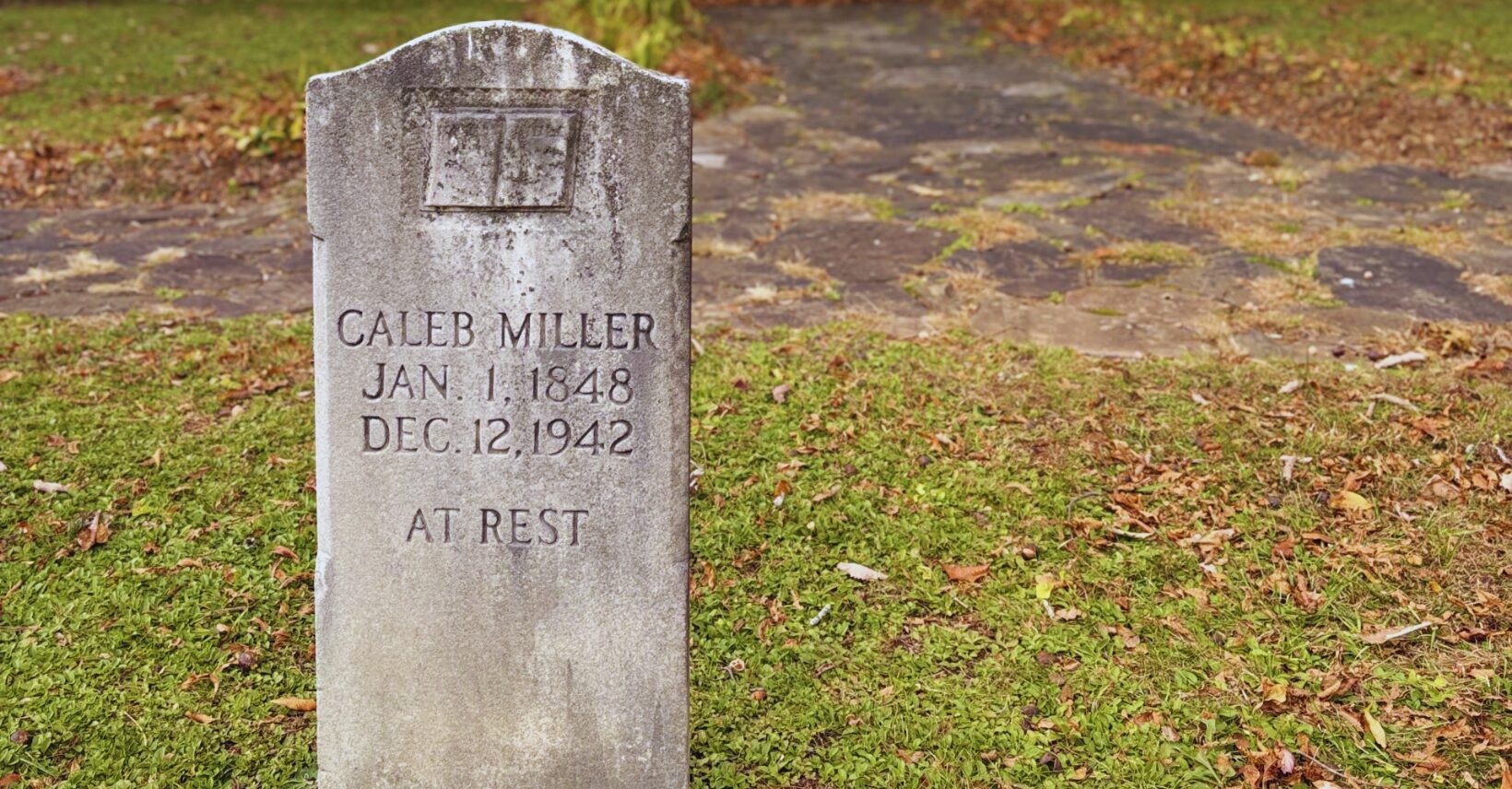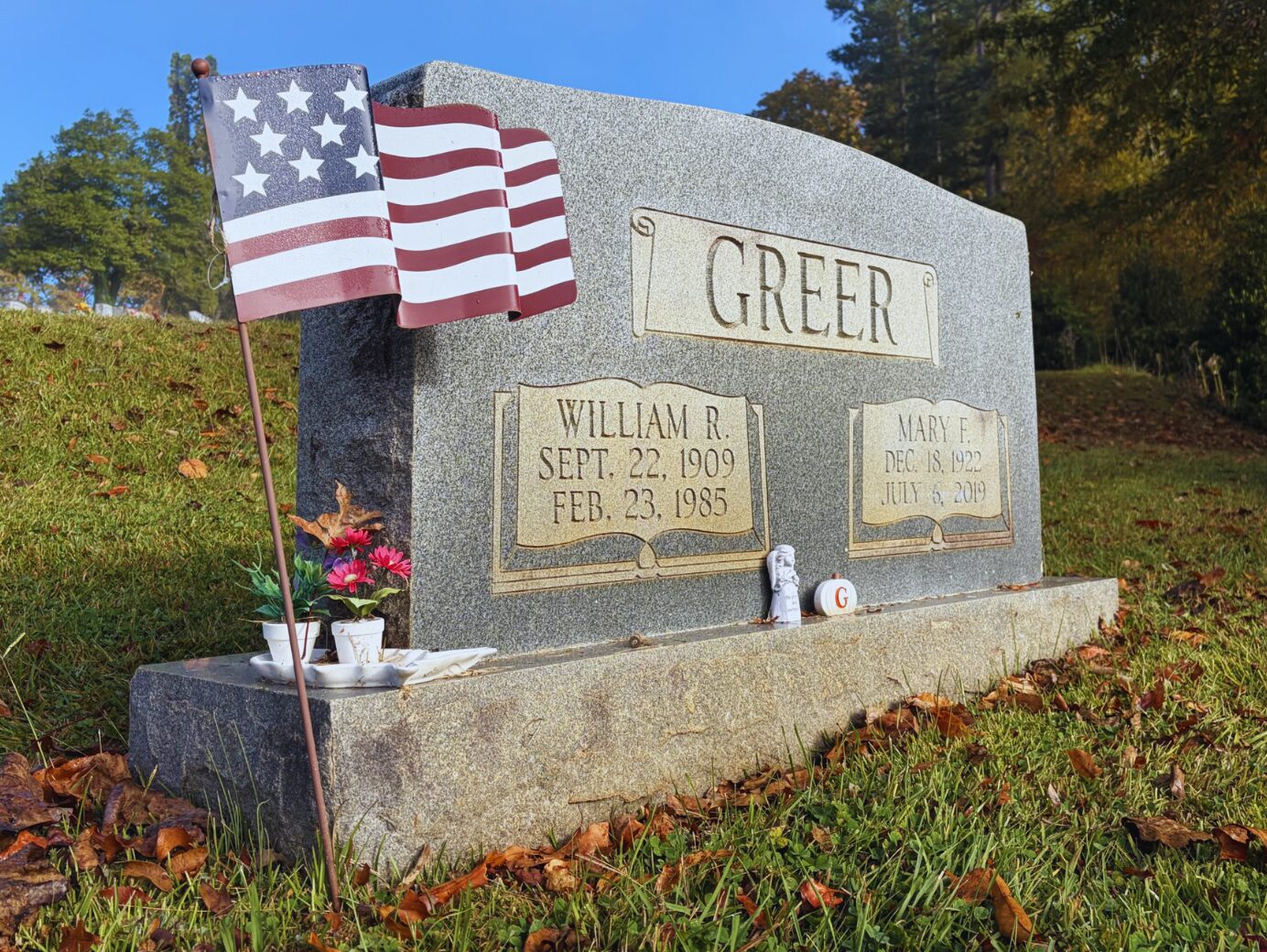EDITOR’S NOTE: Strangeville explores the curious and unexplained stories that have long defined Asheville and Western North Carolina. The region is full of unanswered questions, from old folklore and local legends to eerie encounters, unsolved moments in history, and the true-crime mysteries that still leave people wondering. Each week, we look back with an open mind and a sense of curiosity, trying to understand why some stories take hold and why some can never be explained.
A few miles outside of Brevard, a strange monument stands at the edge of a field. Erected on July 1, 1958, the plaque bolted to a large boulder is patinaed with age. A blue-green layer masks the bronze beneath. Nonetheless, the words are still legible.
“Site of Conestee,” the inscription informs. “Legendary Lost Settlement of the Ancient Cherokee Nation. Visited by British Troops in 1725. Disappeared 1777. Erected by Cherokee Historical Ass’n. Transylvania Historical Ass’n. Unaka Chapter. Daughters of American Colonists.”
Where the story came from is a legend with no reliable narrators involved. One is left to parse out what they believe since the truth is long gone, just like the natives who once called Kanasta home.
What to call the people and place is also unclear. The area where the monument now rests has been known as Conestee Falls and Dunn Rock. It is roughly three miles south of Brevard in Transylvania County. The Cherokee settlement has been called Conestee, Kanasta and Kana’sta. Its original title is lost, but the most commonly associated name with the village is Kanasta.

Cherokee Myth
The primary source on Kanasta is James Mooney’s book “Myths of the Cherokee,” which was released in 1900. Mooney was an ethnographer working for the American Bureau of Ethnography, later incorporated in the Smithsonian. Mooney spent several years living with the Cherokee, writing all he learned of their ways, traditions and beliefs. Most information on the Kanasta village comes from his retelling of the Cherokee myth, although outside sources add additional insight.
On pages 341-342, Mooney writes:
“Long ago, while people still lived in the old town of Kanasta, on the French Broad, two strangers, who looked in no way different from other Cherokee, came into the settlement one day and made their way into the chief’s house. After the first greetings were over the chief asked them from what town they had come, thinking them from one of the western settlements, but they said, ‘We are of your people and our town is close at hand, but you have never seen it. Here you have wars and sickness, with enemies on every side, and after a while a stronger enemy will come to take your country from you. We are always happy, and we have come to invite you to live with us in our town over there.’ And they pointed toward Tsuwatelda (Pilot Knob). ‘We do not live forever, and do not always find game when we go for it, for the game belongs to Tsulkalu, who lives in Tsunegufiyi, but we have peace always and need not think of danger. We go now, but if your people will live with us let them fast seven days, and we shall come then to take them.’”
“The chief called his people together into the townhouse and they held a council over the matter and decided at last to go with the strangers. They got all their property ready for moving, and then went again into the townhouse and began their fast. They fasted six days, and on the morning of the seventh, before yet the sun was high, they saw a great company coming along the trail from the west, led by the two men who had stopped with the chief. They seemed just like Cherokee from another settlement, and after a friendly meeting they took up a part of the goods to be carried, and the two parties started back together for Tsuwatelda. There was one man from another town visiting at Kanasta, and he went along with the rest.”
“When they came to the mountain, the two guides led the way into a cave, which opened out like a great door in the side of the rock. Inside they found an open country and a town, with houses ranged in two long rows from east to west. The mountain people lived in the houses on the south side, and they had made ready the other houses for the newcomers, but even after all the people of Kanasta, with their children and belongings, had moved in, there were still a large number of houses waiting ready for the next who might come. The mountain people told them that there was another town, of a different people, above them in the same mountain, and still farther above, at the very top, lived the Ani-Hyuntikwalaski (the Thunders).”

“Now all the people of Kanasta were settled in their new homes, but the man who had only been visiting with them wanted to go back to his own friends. Some of the mountain people wanted to prevent this, but the chief said. ‘No; let him go if he will, and when he tells his friends they may want to come, too. There is plenty of room for all.’ Then he said to the man, ‘Go back and tell your friends that if they want to come and live with us and be always happy, there is a place here ready and waiting for them. Others of us live in Datsu-naiasgunyi and in the high mountains all around, and if they would rather go to any of them it is all the same. We see you wherever you go and are with you in all your dances, but you can not see us unless you fast. If you want to see us, fast four days, and we will come and talk with you; and then if you want to live with us, fast again seven days, and we will come and take you.’ Then the chief led the man through the cave to the outside of the mountain and left him there, but when the man looked back he saw no cave, but only the solid rock.”
“The people of the lost settlement were never seen again, and they are still living in Tsuwatelda. Strange things happen there, so that the Cherokee know the mountain is haunted and do not like to go near it. Only a few years ago a party of hunters camped there, and as they sat around their fire at supper time they talked of the story and made rough jokes about the people of old Kanasta. That night they were aroused from sleep by a noise as of stones thrown at them from among the trees, but when they searched they could find nobody, and were so frightened that they gathered up their guns and pouches and left the place.”
“Roaming the Mountains” Adds to the Story
Other authors have added elements to Mooney’s retelling. James Alvis Parris, Jr., a columnist for the Asheville Citizen-Times who wrote the “Roaming the Mountains” segment, covered the Kanasta disappearance twice in the newspaper. The articles have marginally different details yet preserve the mythic elements of the old Cherokee story.
In the June 29, 1958, Asheville Citizen-Times paper, Parris claimed, “Kanasta was old when Hernando DeSoto came this way in 1540 on a mad city for a golden city that didn’t exist. It was ancient long before the pale strangers, whom the Cherokee believed were heavenly beings, poured through the passes of the Blue Ridge.” Parris does not list a source for this claim. If the Kanasta had been living there at the time, it is plausible DeSoto could have met them as his journeys did take him through Western North Carolina.

“Strangely enough, Kanasta was the only Cherokee settlement in this part of the mountains. It lay in sort of an isolated wilderness, half way between the last Cherokee town in South Carolina and the last Cherokee settlements some fifty miles westward along the Tuckaseegee,” Parris explained. He found this odd due to a trade route running through the village. “The Estatoe Path originally was the trade lane linking the Indians of the North with the Indians of the South. Later it became a war-path, particularly during the French and Indian Wars.”
As the plaque near Brevard indicates, the British found the Kanasta settlement in the first half of the eighteenth century. “Sir Alexander Cuming representing the British on a mission destined to end in the Cherokee signing their first treaty with the white man, passed through Kanasta in the spring of 1730.”
On July 12, 1996, Parris published another article on the disappearing village. In his previous treatment, he wrote the Kanasta left around 1730. In the second, Parris wrote that the Nunnehi, whoever they were, took the Kanasta away around 1750.
So, What Really Happened?
The Kanasta, by all accounts, were a real tribe that lived near Conestee Falls near Brevard on the banks of the French Broad River. Their fate, however, is far less certain. When the British returned in the 1770’s, the village, which had been seen 40 years prior, had vanished. Whether they joined another Cherokee village, moved south or west, or really were swallowed by a mountain is impossible to know. Whatever their fate was, the myth does correctly state that the white man never got to them. Whoever the Nunnehi were and wherever they took the Kanasta was successful in protecting them.
-
Tombstone Tales: Flat Rock’s Slaves and Freedmen Memorial
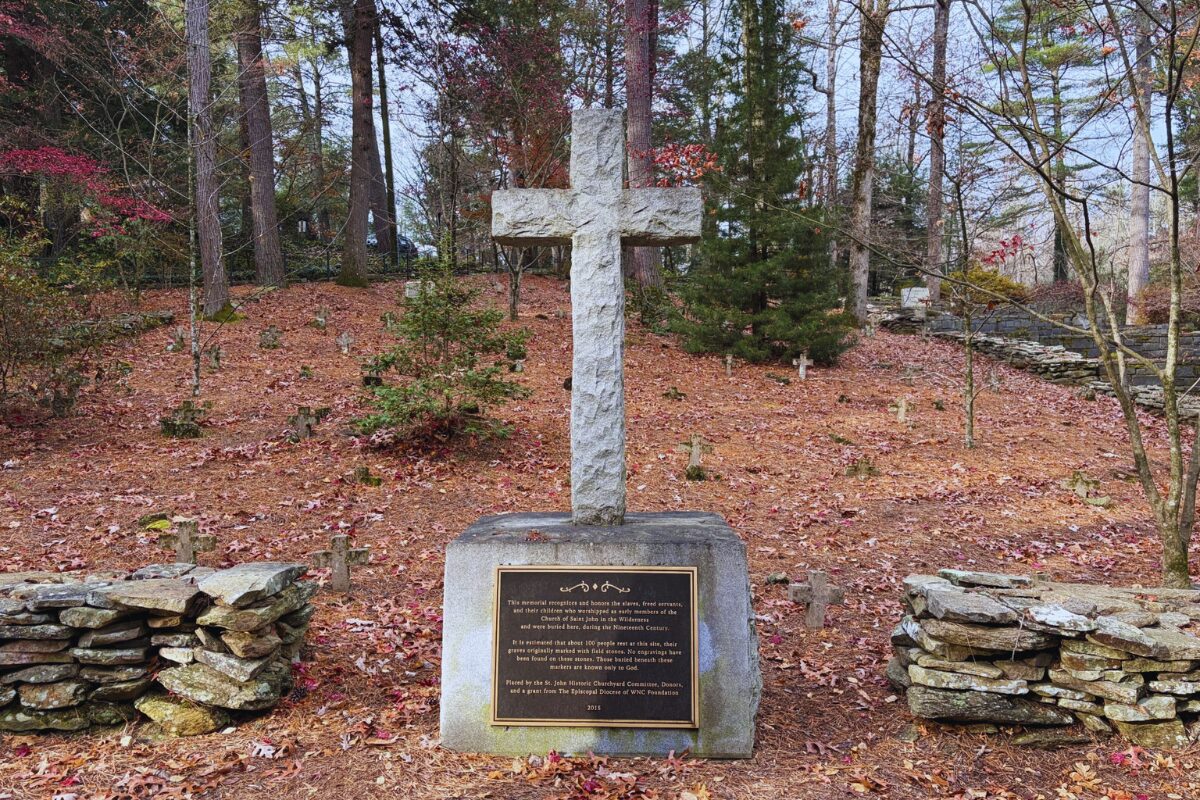
Beneath a quiet stand of trees near Flat Rock’s oldest Episcopal church, a granite cross rises above a hillside of small white markers. It is one of the few memorials dedicated to enslaved and freed African Americans in Western North Carolina.

